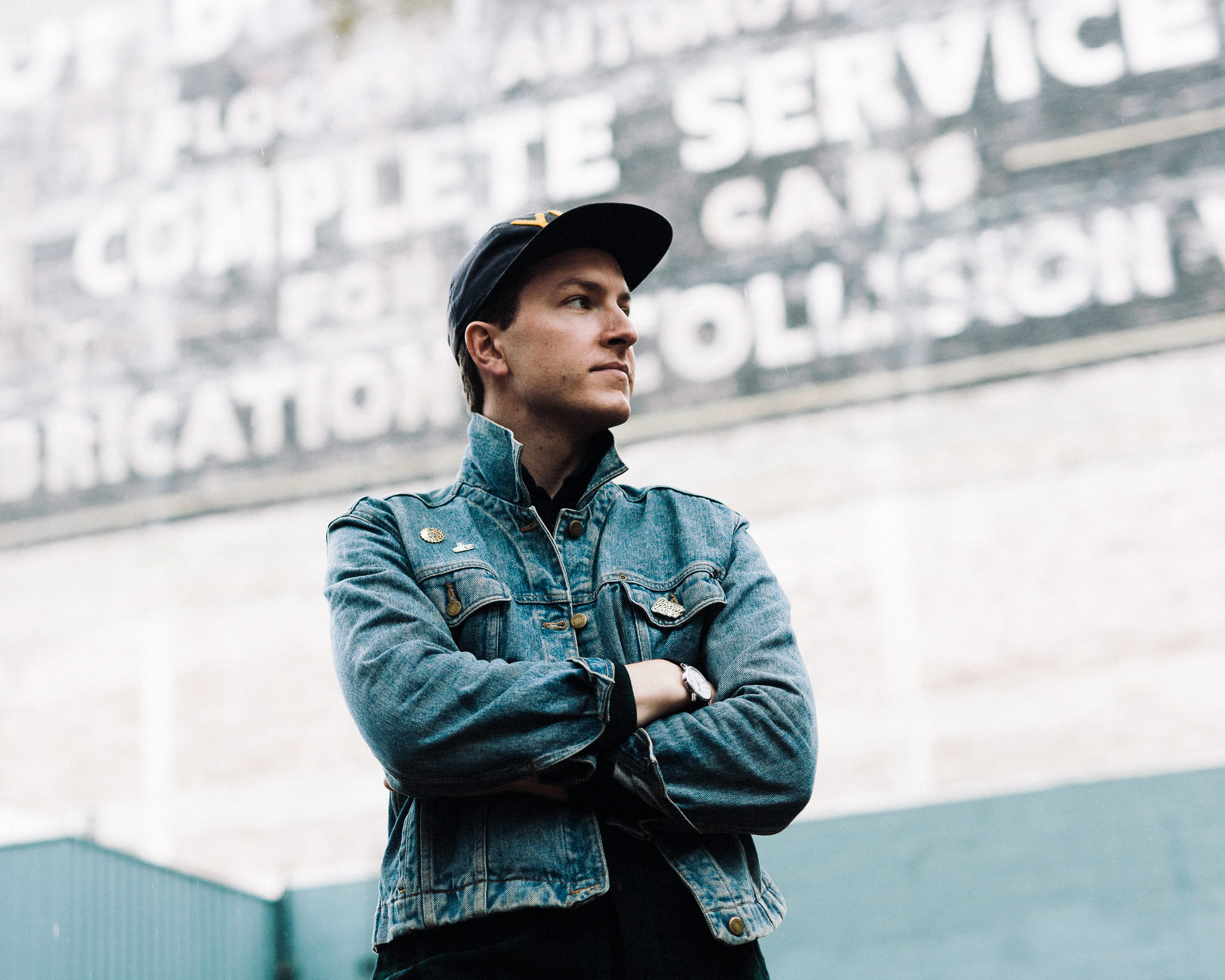
- Interview by Tina Essmaker November 29, 2016
- Photography by Jon Duenas
Craig Winslow
- artist
- designer
Portland-based experiential designer and 3D artist, Craig Winslow, on rekindling his fire for independent work, the realities and rewards of freelance life, what he’s learning as one of this year’s Adobe Creative Residents, and using his work to blend the digital and physical worlds in meaningful ways.
This digital feature is in partnership with our friends at Adobe to highlight the Adobe Creative Residency, a program that empowers talented individuals to spend a year focusing on a passion project while sharing their experience and process with the creative community.
What was it like growing up in the Portland, ME, area and what forms of creativity were you most drawn to early on? I grew up in the small coastal town of Falmouth, Maine. Next to Portland, the closest big city is Boston. Growing up, I enjoyed playing video games because they offered vast worlds for me to explore. I was always a creative kid. Throughout middle school and high school I made all sorts of weird videos with my friends, and stop motions with a tiny webcam. I taught myself Photoshop and played around with Flash to make animations.
I kept exploring and testing different things. I took as many creative courses as I could in high school, from ceramics to print-making, but there weren’t many advanced offerings in the way of graphic design. I actually ended up helping our teacher teach graphic design as I learned the tools and programs so quickly.
So you took it upon yourself to explore creative mediums from an early age. Yeah, and my parents were always supportive of that. My dad wears many hats, but as a builder who makes custom homes, I was always hands-on with helping him out. The smells of my childhood are sawdust, fresh carpet, and tar. I think creativity happened naturally because of that.
My mom is a teacher—another interest of mine—and there are select few people in my family who are super creative, like my aunt, a talented illustrator in Florida. She lived in the Bay Area for a number of years and spent nine years at PCWorld Magazine. My parents saw my interest in creative mediums and they pushed me to do what I enjoyed most.
Tell me about the first time you considered design as an actual career. It must have been in high school. I went to Champlain College in Burlington, VT, but prior to that, I took a summer workshop to learn 3D art and animation. I was interested in creating video games until I realized how volatile that industry is. I had planned to apply for the 3D art and animation program, but, honestly, I missed the deadline. So I went to school for multimedia and graphic design. I didn’t know what my actual job would be, but I wanted to do something in design, whether that was animation or print or web.
Design is a broad field. How did you specifically decide to focus on experience design and 3D art? I took all of the electives that I could from the 3D and animation majors and graduated with sort of a double major. By the end of college, I had print and traditional design work as well as 3D work.
After graduation I landed an internship at JDK Design. I did digital production for Burton Snowboards, which was a huge dream of mine. I worked with the designers to do the finishing touches and make the boards ready for production. I learned more in those four months than all of college combined.
There was an industrial design team there, and I was eagerly looking to get hired after my internship, so I showed them some of my 3D work. Having those 3D skills came in handy because after a few more months of interning, they hired me full-time. I became their go-to for rendering, which is a great fit because I’ve always been into presenting my work really well. So that’s how that happened. I stumbled onto an industrial design team not knowing what that was.
“I don’t want any of my projects to feel like I’m doing the same thing over and over. With each project, I try to add one extra element or introduce a new tool so I can push myself and feel like I’m progressing.”
How long did you work at JDK Design before you decided to go freelance? I worked there for three years. A large bulk of the work was designing footwear for Chaco, and doing work for Merrell and Patagonia. It was very technical work with physical, real-world limitations, and I started to miss the vast digital worlds of video games. When I first saw projection mapping online, I came up with the idea to do projection mapping on the footwear I was designing. I decided to teach myself projection mapping by reading tutorials online and playing around with projectors and software.
After many late nights, I presented the concept to JDK, made a nice video, and a friend suggested I submit it to NOTCOT. They picked it up and then Gizmodo picked it up. Then my internet exploded for a week. Enough so that I quit my job and told myself, “I’m going to do it. This is it!” Part of me knew if I kept working at JDK, I’d do more industrial-type design and wouldn’t have time to focus on this huge new passion on the side. I figured I could leave, freelance, explore more, and be hired by JDK to do speciality projects.
Did it work out that way? It didn’t. (laughing) It wasn’t as smooth of a transition as I had hoped for. I did some 3D animation projects for JDK, but those weren’t for a year later. The month I left, I did my first project for Bucketfeet in a pop-up shop in New York. Then I had no other work lined up.
I didn’t know what freelancing was like. Entrepreneurship runs in my family, but I didn’t have a business background. I was a designer who wanted to create. The next six months were rough. It was hard to line up projects. I wanted to explore, but I was so strapped for money that it became a point of stress. It felt irresponsible to tinker and have fun because I didn’t have a paycheck coming in at that point.
How did you sustain yourself during that time? Did client work eventually pick up? There were a couple factors. For money, I fell back on my base skills, taking on a couple logo and branding projects. But a huge motivator was attending XOXO festival in Portland, OR. That rekindled the independent fire in me—I believed I could do it.
The other risk that I took while I was at JDK was aggressively putting money into a 401k. I decided it was time to invest in myself and cash out that 401k. Worst-case scenario, I figured I could get a normal job again. For three years, I supplemented my work with my 401k, deciding to be my own angel investor so I could get the equipment and software I needed.
Then I decided that I wanted to move to a bigger city because Burlington, VT, felt so small. I wanted to put myself out there in hopes it would help me get more work and feel more connected.
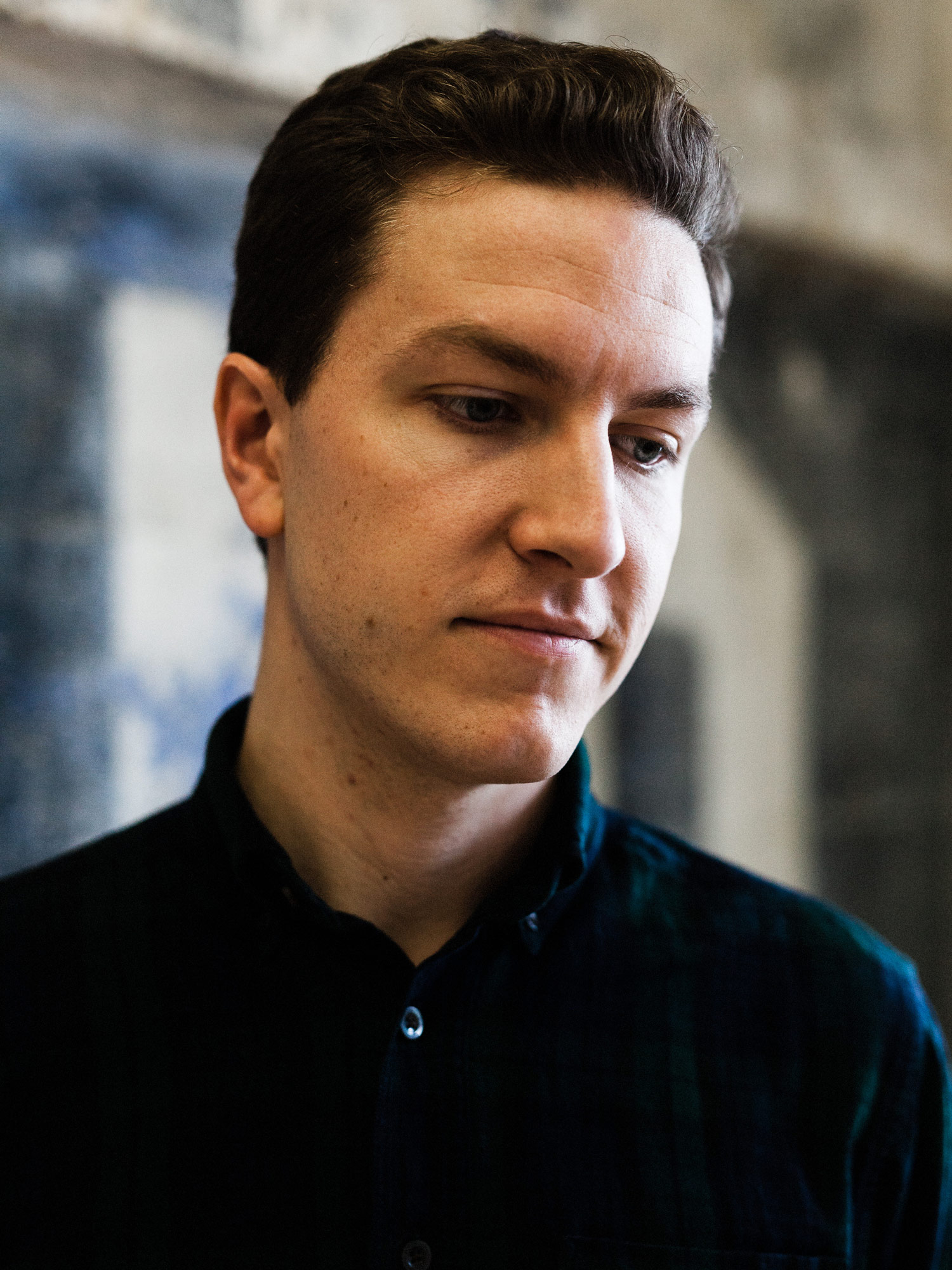
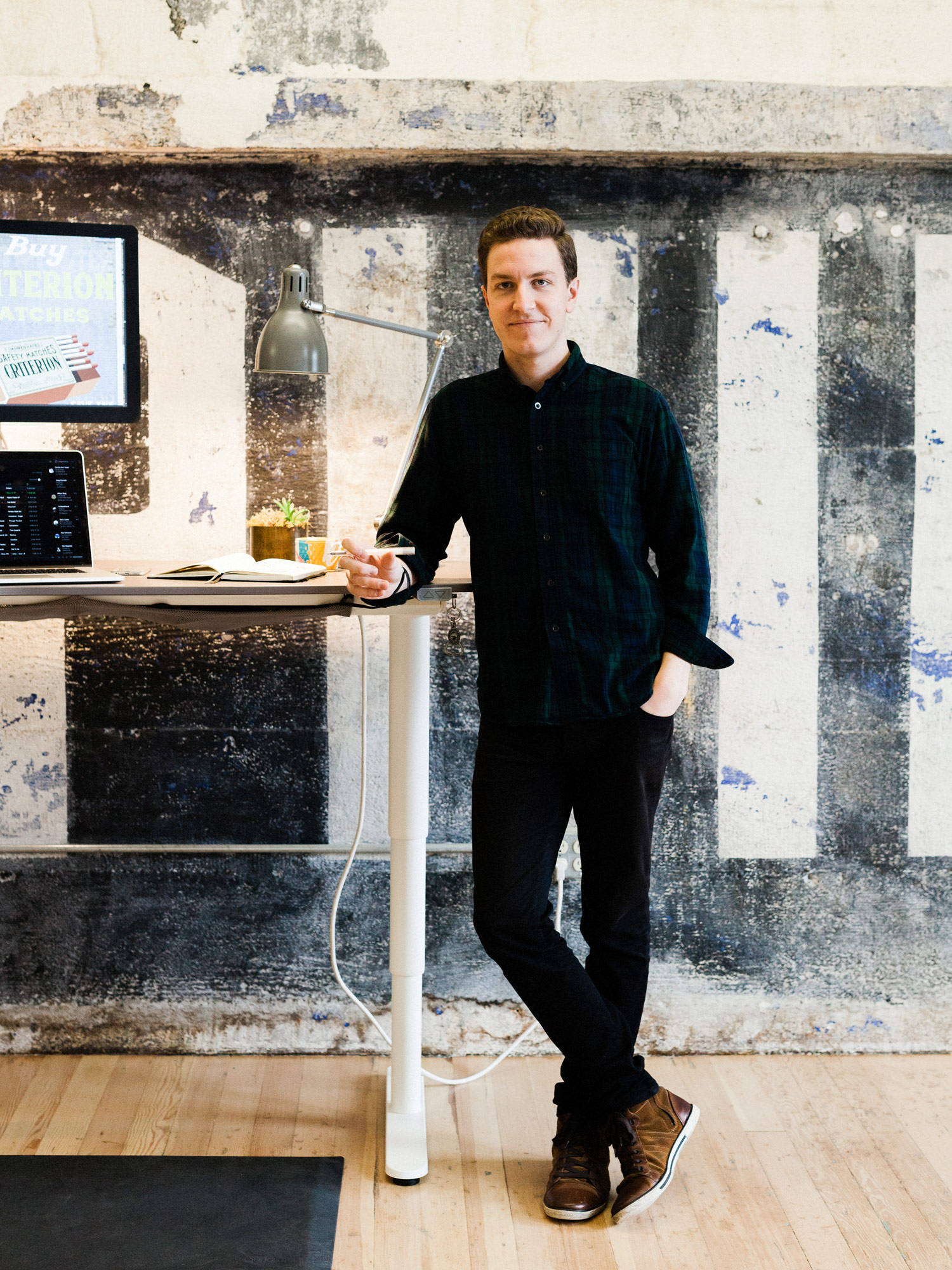
That’s when you decided to move from Portland, ME, to Portland, OR? Yeah, I moved from Vermont back home to Maine for a month to pack before I moved. At that point, I’d been in Portland, ME, and Vermont, and I wanted to get outside of the small bubble of New England. In college, I went to Italy to study abroad for two weeks and I had also been to Montréal many times. Visiting those more international places reminded me that there’s a whole world out there.
I had heard great things about Portland, OR, and JDK Design previously had an office in Portland. After they closed that office, a lot of the team went freelance or went to work at places like Nike, Instrument, Cinco, and Nemo, so I already had connections out there.
I also considered the community and quality of life. Part of me really wanted to move to New York, but I was already feeling the stress of money, and I knew that stress would triple— I’d have to get a full-time job. In Portland, I knew I could stay independent for a little longer.
You didn’t just make the move, but you decided to drive from Portland, ME, to Portland, OR, and do a project called Projecting West along the way, which you and a friend funded on Kickstarter. Tell me about how the project came about. I knew I wanted to drive across the country and make a project out of the move. I met my friend Mike Ackerman my freshman year of college and we stayed in touch ever since. I wanted to do the project with him because I thought he’d be a great travel buddy, and it would be cool to use his animations and brilliant narrative mind for it.
We decided to make the trip into a 15-day story, which unfolded live. We launched the Kickstarter campaign May 13, 2015, and it was successfully funded a day before we left on June 1, 2015. We were a Staff Pick and there was a lot of excitement around the project. That funded the trip and we were able to buy the gear we needed to make it happen.
What did you take away from producing work daily for 15 days straight over the course of the project? It was an amazing experience. I consider myself a perfectionist, which is good and bad. When you need to consistently make something for 15 days, you can’t go hard on one day and not the next. We set the tone and an ambitious standard the first day and then had to keep that up for the remainder of the trip. We didn’t always hit that mark. It was a bit of a rollercoaster, and we realized that not every day was going to be amazing.
Halfway through we were in the Badlands and were so burnt out that we missed our deadline. It was the worst feeling, we had let our backers down. Instead of pushing ahead quickly, we slowed down and reassessed. The next night, we did two light installations right at sunset and got to bed early for the first time during the trip.
That was a good lesson for me. I tend to say yes to everything. The lesson was that, when stuff is piling up, instead of pushing ahead, I should slow down. When faced with a deadline, it’s okay to slow down and reassess what’s going on before you move forward. Also, I learned not to put so much pressure on myself. People were rooting for us, and they wanted us to succeed.
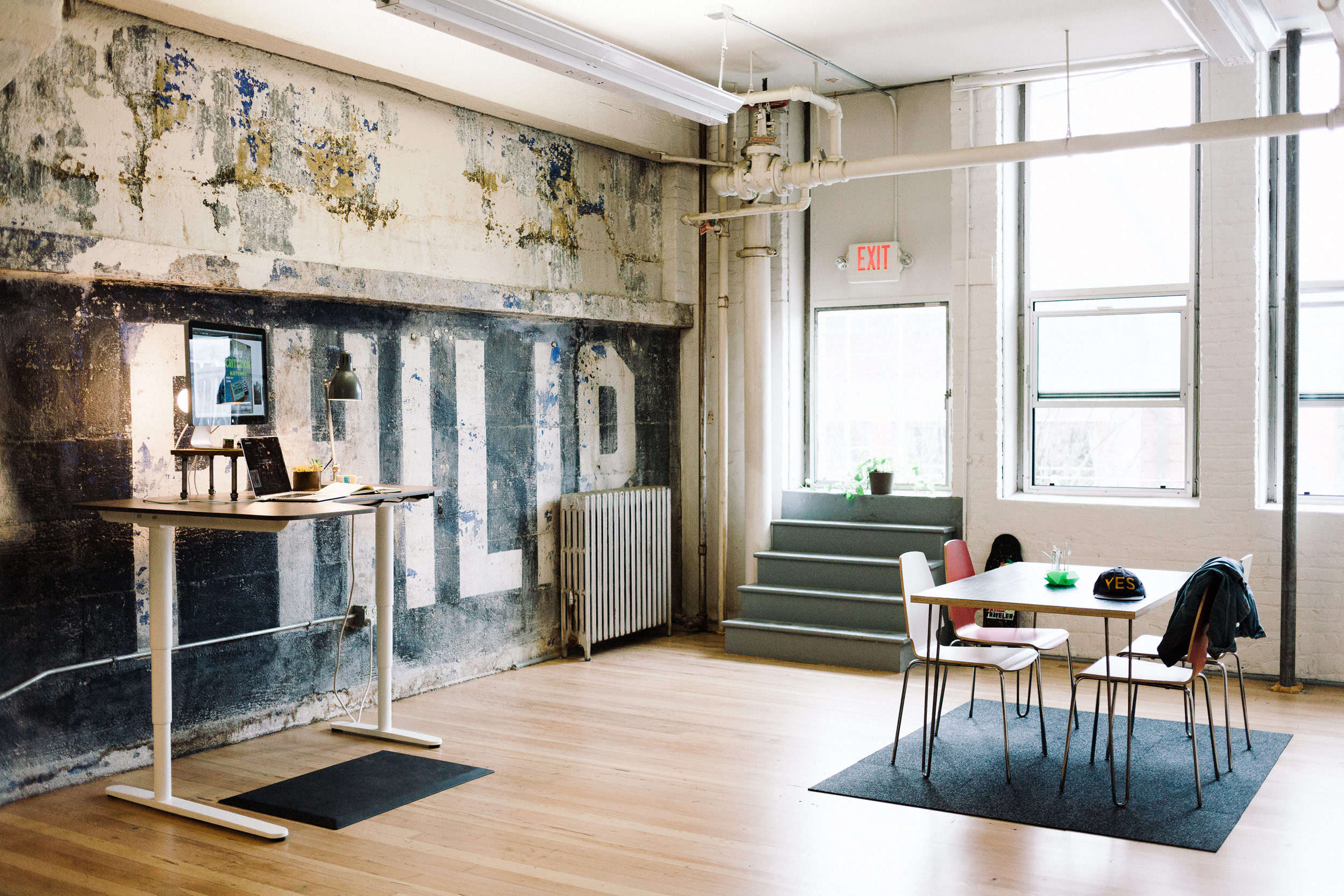
Let’s talk about the residency. This year you’re one of four Adobe Creative Residents. Your year-long focus is bringing ghost signage to life through a projection mapping project called Light Capsules. Was that inspired by your trip? Yes, directly inspired! On day six of Projecting West, we had no idea what we wanted to do. We were wandering around Omaha, NE, and finally at midnight we stumbled on a giant wall ad I saw earlier in the night, and it clicked. We projected on that.
Since that night, I kept noticing these fantastic ghost signs everywhere and I wanted to bring them back to life with projection mapping. Until applying for the residency year later, I had no idea how to fund a project like this. Kickstarter was my first foray into self-funding a project, and I thought about applying for a grant, but then I heard about the Adobe residency through my friend, Mike, who I did Projecting West with.
Mike told me about the residency because he was going to apply. It sounded amazing, but the deadline was in two days. I already used so many of Adobe’s programs. The only software they don’t have is the actual projection mapping software. It seemed like something I needed to apply to, so I stayed up all night and put everything I had into a pitch. I ended up being chosen, and there are no hard feelings between Mike and me. We’re still really good friends.
What does it mean to bring ghost signage to life? Ghost signage is the common term for old advertisements or signage for companies, usually on older industrial-type buildings. The signs are from the early 1900’s and are pre-vinyl, pre-mass printing, and pre-neon. The most efficient way was to hand-paint these signs directly on the brick or wood of a building. The chemicals in the inks that were used were lead-based and the chemicals have since stained into the brick. A lot of the signs have been painted over, or destroyed, but often the multiple layers show through. These signs are all over. Essentially, “ghost signs” are worn, wall-painted ads.
Before I bring them back to life, I go through the process of doing research to find historical photographs, or I’ll take photos and look at the bits of paint to figure out what the sign used to say. I then take those photos, flatten them in Photoshop, and stitch them together. In Illustrator, I recreate the signs from scratch. There’s no picking a typeface because it was all custom back then.
Once you have the visuals, you project those onto a building’s surface so people can what the original type would’ve looked like, but you also animate the projections. Yes, and my favorite signs are ones that have multiple layers. They look like double exposure photographs. What’s amazing about this is that I can animate it to highlight a previous layer of history and bring it forward. A lot of the animations I’m working on now also show the paint strokes that would have been done on each of these letters. I’m working with talented sign painters and letterers to make sure I’m informed about their process.
How many ghost signs have you brought back to life since starting this project? I’ve done 14 now, but there are many, many more I’d like to do. Along the way I’ve met and collaborated with all sorts of incredible people as well. Dr. Ken Jones has an incredible photo collection of over 7,000 ghost signs, while Sam Roberts runs Ghostsigns, and we collaborated on a series for the London Design Festival.
“The Light Capsules project is an interesting way to bring people together. Some people have seen it online and come out for it. Others see it while walking by and stop to look.”
I noticed that you’ve recorded your light capsules so people who aren’t there can experience them. I have been photographing and recording video to document and show others. It’s easier to show someone a video instead of describing it. I did a light capsule in Detroit in October and I recorded it with a 360-degree camera so viewers could feel like they were there.
That’s cool. You’re not preserving history because you’re not repainting the signs, but you are celebrating it. What motivates you to do this work? It’s to get people excited about the world around them. I love the idea of getting people to notice something they see every day, but in a different way. There are so many interesting stories and bits of history hidden in plain sight. I want people to be more curious, to look around them, and to not become so lost in the day to day or be looking down on their phones all of the time.
You blend the digital and physical worlds and bring people together for an experience in a physical space. What is it like to see people interact around an experience you’ve created for them? That’s what I’m most excited about. The Light Capsules project is an interesting way to bring people together. Some people have seen it online and come out for it. Others see it while walking by and stop to look. When I was in Cincinnati people brought blankets and hung out. The animations are a couple-minute loop that lives for the night, so it’s an ambient thing that’s happening that allows me to talk with people in person. It’s been so rewarding to see people connect in a social setting like that.
Do you feel creatively satisfied? I’m never 100% satisfied, but I do feel little milestones of satisfaction. One in particular was back when I was struggling to make this independent thing work, and I saw a little boy completely in awe over another interactive project of mine, Growth. That moment alone made all of the hard work leading up to it worth it.
I don’t want any of my projects to feel like I’m doing the same thing over and over. With each project, I try to add one extra element or introduce a new tool so I can push myself and feel like I’m progressing.
For example, I recently spoke at Adobe MAX and we had a booth for the residency, so I brought the 360 video from Detroit into a Gear VR headset so people could be transported there to see the installation. It felt like a recorded memory that you could re-enter, and made me hungry to explore more in the world of virtual and augmented reality.
“I’ve pushed myself hard and poured myself into my work. I think I need to be better at taking a moment to stop and identify the progress I’ve made, otherwise I’ll beat myself up for not being at the next step.”
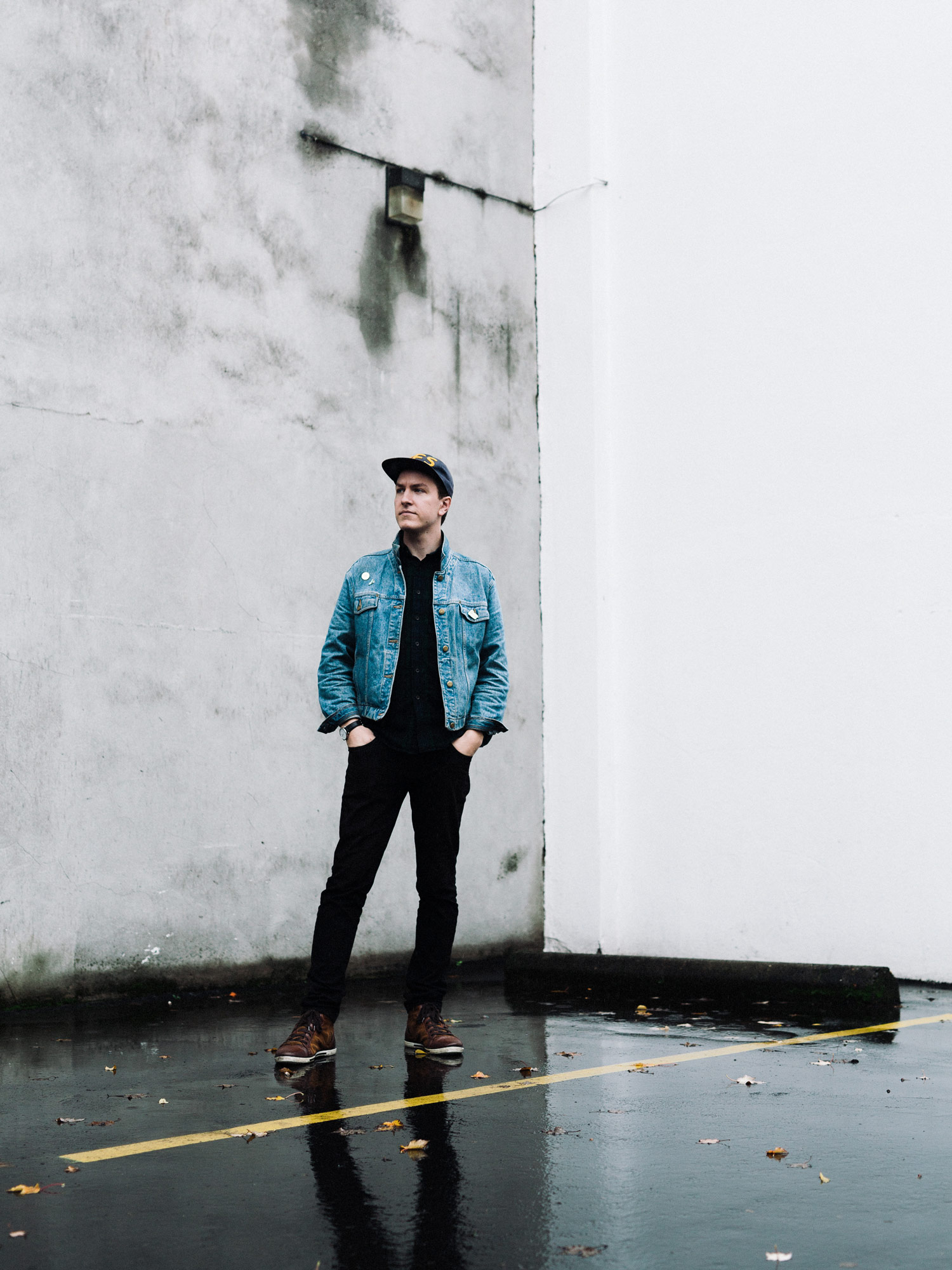
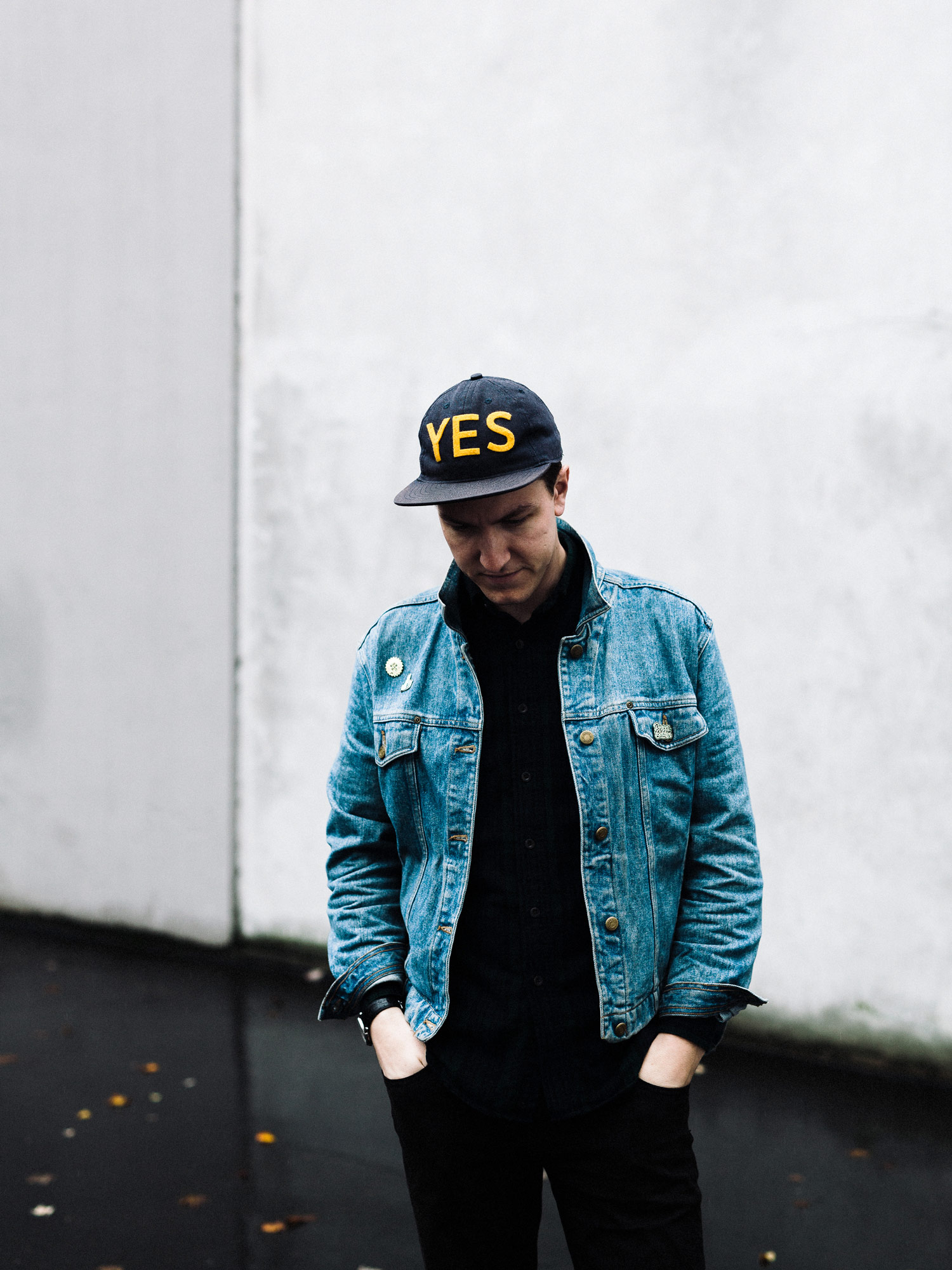
What are your goals for the remainder of the residency, which goes through April 2017? I’m halfway through this residency already, and I’m wondering what’s next. I’ve pushed myself hard and poured myself into my work. I think I need to be better at taking a moment to stop and identify the progress I’ve made, otherwise I’ll beat myself up for not being at the next step.
For the second half of the residency, I want to focus on introducing new technologies and methods to the project as well as doing more light capsules. I did a collaboration in London, which got some good press in Fast Company and Creative Review and I got some attention from New York asking me to bring the project there. I have goals for certain locations.
I’m also trying to think about how to wrap up all of this. There’s no reason to stop after the residency if there’s more to be done, but I’d love for this to be a standalone map-based site that shows all of the projections I’ve done. I’ve also thought about how I could make it open source and turn it into a teaching tool, allowing others to submit their own light capsules to be added to the map.
What’s the best advice you’ve been given that has helped fuel your creativity and work so far in your career? I read this book by Austin Howe called Designers Don’t Read, which in part inspired me to apply for that internship at JDK. A couple months in, I emailed him to thank him and he gave me this advice: “Continue to be selective, it will pay off.” That has stuck with me. My career has felt like a rabbit hole, in that I’ve explored one thing that’s led to the next thing and the next thing, and so on. This year I’ve gained some momentum and have tried to be more selective. The more focused your work is on what you want to do, the more it leads to more work you truly want to do.
I’ve also realized the importance of passion projects. They allow me to explore and are not limited by rules. Being given moments to explore can be rare. I want to keep doing that. I don’t want to be stuck in my ways.
This year, I’ve been growing into this network of people who are working in new mediums. There’s a demand for new types of experiences. People are hungry for it. I’m happy to provide new experiences for people, and that’s one of the reasons I love projection mapping. You don’t need to wear anything or be told how it works. It’s happening and you can share a conversation with someone about what you’re part of.
Yes, it’s accessible, and it goes back to what we touched on earlier about bridging the digital and physical worlds in meaningful ways. Yes, with the internet, we’re so tied into the digital world through a screen. What I’m focusing on layers the digital and physical worlds together, but I’m trying to figure out a way to do it that isn’t invasive. I don’t want to create a world where there are ads everywhere, but augmenting a space with light is so interesting to me. There’s an element of empathy in there as well. It’s about the shared experience. My biggest hope is to make something that people can enjoy together in real life rather than being isolated behind a screen.
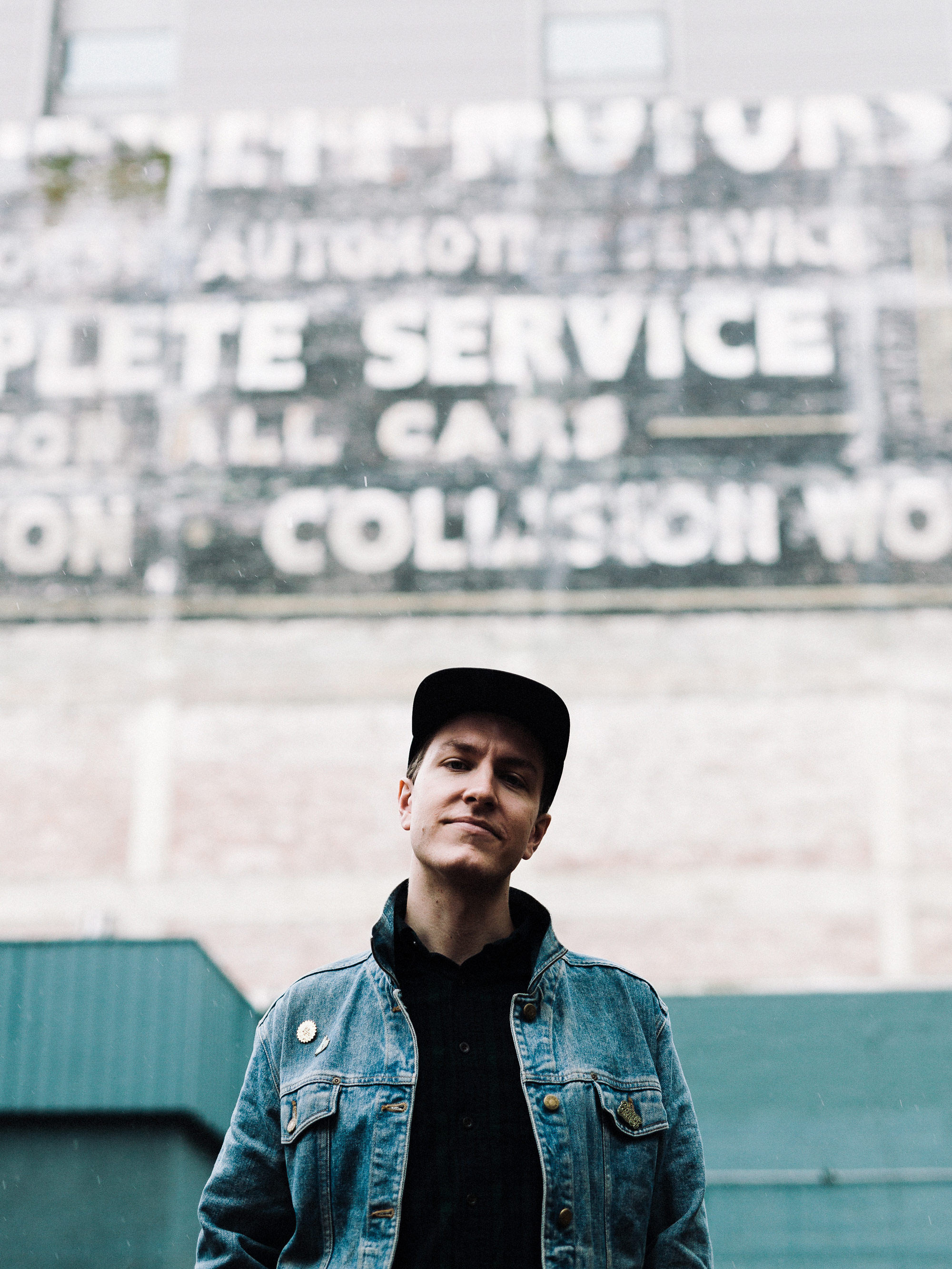
“What I’m focusing on layers the digital and physical worlds together…It’s about the shared experience. My biggest hope is to make something that people can enjoy together in real life rather than being isolated behind a screen.”